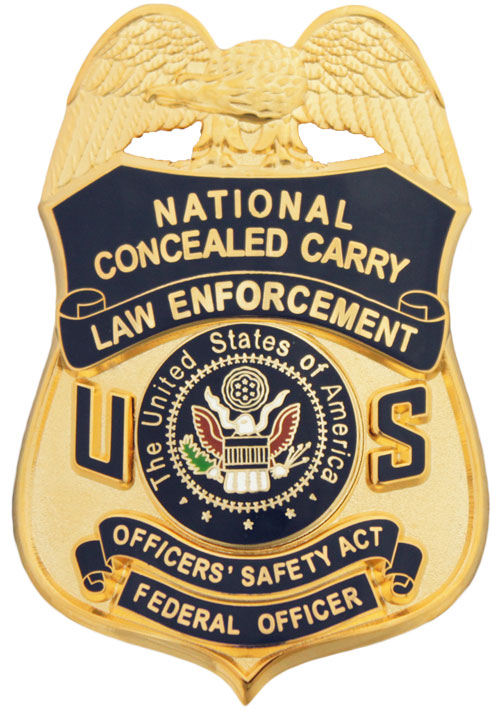LEOSA Certification Course

Course Fees: $75 (includes card and range fee)
Qualification: FBI Pistol Qualification (Unless you need a specific department qualification requirement.)
Time Duration:
Pre-Requisites: See legal description below.
Required Items:
When arriving for your qualification, you must bring:
- Drivers License / Legal Photo ID
- Current LEOSA Qualified Permit
- Make / Model / Serial No. / Caliber of Firearm they are qualifying with
To Schedule Your Qualification,
Call (714) 925-2448
SUMMARY of The Law Enforcement Officers Safety Act (LEOSA) of 2004
On July 22, 2004, the Law Enforcement Officers Safety Act (LEOSA) of 2004, also commonly called “HR 218,” became law (18 U.S.C. §§, 926B, 926C). This federal law allows “a qualified law enforcement officer” or “a qualified retired law enforcement officer” with identification meeting specified criteria to carry a concealed firearm anywhere in the nation, notwithstanding most state and local laws restricting the possession of concealed weapons.
Requirements for “Qualified Law Enforcement Officers”
To qualify as “a qualified law enforcement officer” under LEOSA, a person must:
- Be an employee of a governmental agency authorized by law to engage in or supervise the prevention, detection, investigation, prosecution of, or incarceration of any person for any violation of law.
- Have the statutory powers of arrest.
- Be authorized by the agency to carry a firearm.
- Not be subject to any disciplinary action by the agency.
- Meet the agency’s standards, if any, requiring employees to regularly qualify in the use of a firearm.
- Not be under the influence of alcohol or any intoxicating or hallucinatory drug.
- Not be prohibited by federal law from possessing firearms.
- Carry photographic identification issued by the governmental agency identifying them as a law enforcement officer.
Regarding the requirement for statutory powers of arrest, California law allows “a peace officer” to make arrests (Pen. Code, § 834). Penal Code §§ 830.1 through 832.6 specify who qualifies as peace officers and their authority. No one else is considered a peace officer under California law (Pen. Code, § 830).
Requirements for “Qualified Retired Law Enforcement Officers”
To qualify as “a qualified retired law enforcement officer” under LEOSA, a person must:
- Be retired in good standing from service with a public agency as a law enforcement officer for reasons other than mental instability.
- Prior to retirement, have been authorized by law to engage in or supervise the prevention, detection, investigation, prosecution of, or incarceration of any person for any violation of law.
- Prior to retirement, have had statutory powers of arrest.
- Prior to retirement, have either:
- Been regularly employed as a law enforcement officer for an aggregate of 15 years or more; or
- Retired from service after completing the probationary period due to a service-connected disability as determined by the agency.
- Have a nonforfeitable right to benefits under the agency’s retirement plan.
- Meet the state’s standards for training and qualification for active law enforcement officers to carry firearms within the past 12 months.
- Not be prohibited by federal law from possessing firearms.
- Carry identification meeting specified criteria (see below).
Identification Requirements Under LEOSA
A retired law enforcement officer’s credential must meet one of the following criteria:
- A photographic identification issued by the agency from which the officer retired, indicating the officer has, within the past year, met the agency’s standards for training and qualification to carry a firearm.
OR - A photographic identification issued by the agency from which the officer retired, AND a certification issued by the state of residence indicating the officer has, within the past year, met the state’s standards for training and qualification to carry a firearm of the same type as the concealed firearm.
Additional Notes and Limitations
Both “qualified law enforcement officers” and “qualified retired law enforcement officers” must meet state standards for firearm training and qualification under LEOSA. California Penal Code § 832.3 outlines initial and continuing firearm training requirements for peace officers, with specific curricula established by the California Commission on Peace Officer Standards and Training (P.O.S.T.). However, California law does not set a statewide standard for post-academy training and qualification for active law enforcement officers; this is determined by individual agencies.
LEOSA does not authorize carrying all types of firearms. For instance, it does not permit the carrying of machine guns, silencers, or destructive devices. Additionally, LEOSA does not override state laws prohibiting or restricting concealed firearms on private property or government property (e.g., installations, buildings, or parks).
Individuals seeking to confirm their qualification as “qualified law enforcement officers” or “qualified retired law enforcement officers” should consult their employing agency and legal counsel or obtain legal advice from a licensed attorney in California.
